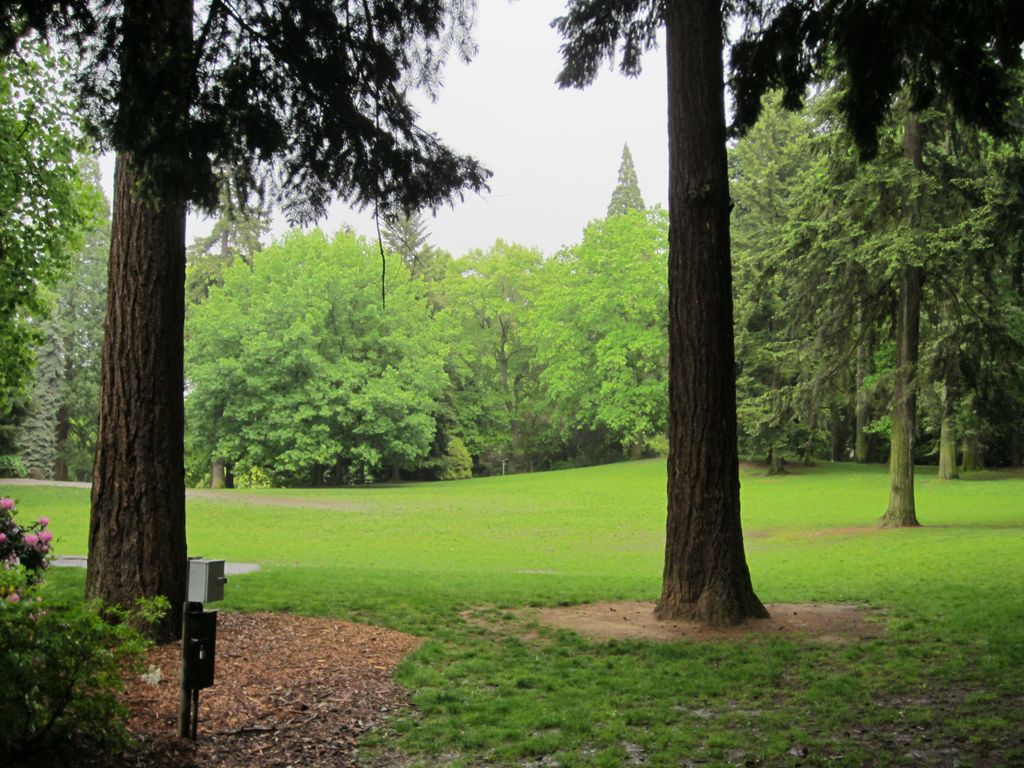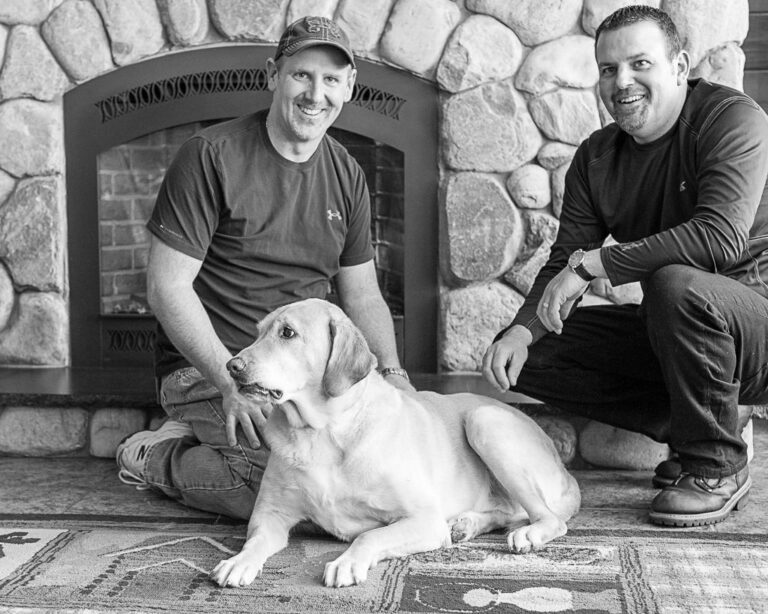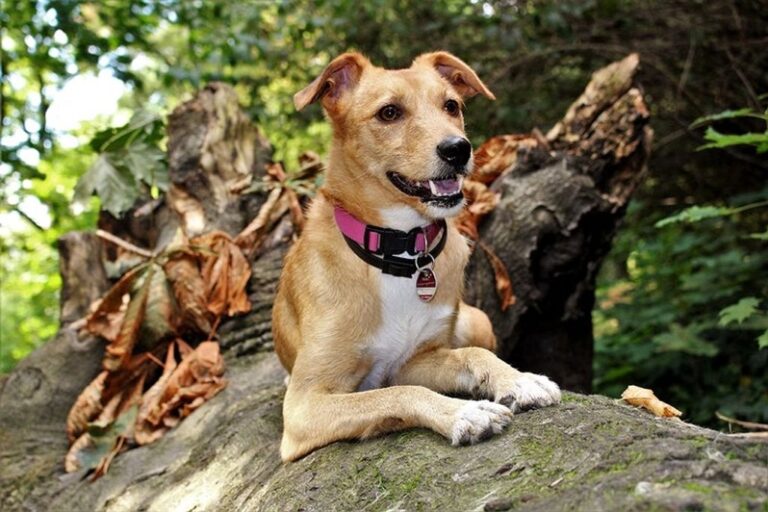Discover Off-Leash Dog Parks with Agility Courses
Off-leash dog parks with agility courses offer a unique and exciting experience for both dogs and their owners. These parks provide numerous benefits, such as socialization opportunities, exercise for your pup, and the chance to improve their physical and mental abilities through agility training. In this article, we will explore the reasons why off-leash dog parks are paw-some, the thrill of agility courses, how to find the perfect dog park, tips for preparing your dog for agility training, mastering the agility course, fun games to play at the dog park, and important safety tips. Read on to discover the joy and adventure that awaits you and your furry friend at off-leash dog parks with agility courses.
Key Takeaways
- Off-leash dog parks with agility courses provide socialization opportunities and exercise for your pup.
- Agility training can improve your dog’s physical and mental abilities.
- Research and choose a dog park with the right features and safety measures.
- Prepare your dog for agility training through basic obedience and endurance building.
- Start with simple obstacles and progress to more challenging courses to master the agility course.
Why Off-Leash Dog Parks Are Paw-some

Benefits of Off-Leash Dog Parks
Off-leash dog parks offer a paw-some opportunity for us to let our furry friends run free and have a blast. It’s a chance for them to socialize, exercise, and explore in a safe and secure environment. At these parks, dogs can interact with other pups, play fetch, and even try out some agility tutorials on YouTube. It’s a great way to keep them physically active and mentally stimulated.
Creating a Safe Environment for Dogs
When it comes to creating a safe environment for dogs, we want to ensure that our furry friends can enjoy their time at the off-leash dog park without any worries. One of the key factors to consider is the location of the park. South Carolina’s finest dog parks offer spacious areas for dogs to run and play, with secure fencing to prevent any escapes. Additionally, it’s important to check if the park has separate areas for small and large dogs to prevent any potential conflicts.
Socialization and Exercise for Your Pup
When it comes to off-leash dog parks, socialization and exercise are two key benefits for our furry friends. These parks provide a safe and controlled environment for dogs to interact with other dogs and humans, helping them develop important social skills. It’s a great opportunity for our pups to learn how to properly greet and play with other dogs, which can prevent behavioral issues in the future.
In addition to socialization, off-leash dog parks also offer ample space for our dogs to get the exercise they need. Dogs are natural athletes, and running, jumping, and playing in an open space allows them to burn off energy and stay fit. Regular exercise is essential for their physical and mental well-being.
To make the most of our time at the dog park, here are a few tips:
- Engage in interactive play: Bring along toys or balls to play fetch or engage in a game of tug of war with your pup. This not only provides exercise but also strengthens the bond between you and your furry friend.
- Observe and learn: Watch how your dog interacts with other dogs and humans. This can give you insights into their behavior and help you address any areas that need improvement.
- Stay vigilant: Always keep an eye on your dog to ensure their safety and the safety of others. Be aware of any signs of aggression or discomfort and intervene if necessary.
Remember, off-leash dog parks are a great way for our pups to socialize and exercise, but it’s important to be responsible and respectful of others in the park.
The Thrill of Agility Courses

What Makes Agility Courses Exciting
Agility courses are an absolute blast for us and our furry friends! Jumping, weaving, and tunneling through the course gets our adrenaline pumping and brings out the inner athlete in both of us. It’s like a doggy obstacle course race where we can show off our skills and have a great time together.
Not only are agility courses physically stimulating, but they also provide mental challenges for our dogs. Concentration and problem-solving are key as we navigate through the different obstacles. It’s amazing to see our pups figure out the best way to tackle each hurdle and improve their abilities with each run.
To make things even more exciting, agility courses often have timed competitions. We can compete against other dog owners and see who can complete the course in the fastest time. It adds a friendly competitive element to the experience and pushes us to improve our skills.
So, if you’re looking for a thrilling activity to do with your furry friend, give agility courses a try!
Improving Your Dog’s Physical and Mental Abilities
When it comes to improving our dog’s physical and mental abilities, we love taking them to the Simmonds Family Dog Park. It’s a great place for them to run, jump, and play, all while challenging themselves on the agility courses. The park offers a variety of obstacles that help strengthen their muscles and improve their coordination. Plus, it’s a fantastic way for us to bond with our furry friends and have some fun together.
Bonding with Your Furry Friend Through Agility
Agility courses are not only a great way to improve your dog’s physical and mental abilities, but they also provide an opportunity for us to bond with our furry friends. As we navigate through the obstacles together, we learn to communicate effectively and trust each other. It’s a chance for us to work as a team and have fun at the same time.
One of the best ways to strengthen the bond with your dog during agility training is through positive reinforcement. We can use treats and praise to reward our dog for successfully completing an obstacle or following a command. This positive reinforcement not only motivates our dog to perform well but also deepens the connection between us.
In addition to agility training, we can also engage in other activities at the dog park to further strengthen the bond. We can play games like hide and seek with treats, fetch and retrieve, or even a friendly game of tug of war with dog toys. These activities not only provide mental stimulation for our dog but also create opportunities for us to interact and have fun together.
Remember, the key to bonding with your furry friend through agility is to have patience, be consistent, and most importantly, enjoy the journey together!
Finding the Perfect Off-Leash Dog Park

Researching Dog Parks in Your Area
When it comes to researching dog parks in your area, there are a few things to keep in mind. First, it’s important to consider the number of dogs in the United States and the demand for off-leash spaces. With millions of dogs in the country, finding a park that isn’t overcrowded can be a challenge. Second, take a look at the park’s amenities and features. Are there separate areas for small and large dogs? Is there shade and water available? These factors can make a big difference in your dog’s experience. Lastly, don’t forget to check the park’s rules and regulations. Some parks may require vaccinations or have specific hours of operation. By doing your research, you can find the perfect dog park that meets your pup’s needs.
Features to Look for in an Off-Leash Dog Park
When searching for the perfect off-leash dog park, there are a few key features that we look for. First and foremost, we want a park that provides a safe and secure environment for our furry friends. This means having a sturdy fence that keeps our dogs from wandering off and getting into trouble. Additionally, we love parks that have plenty of open space for our pups to run and play. A spacious park allows our dogs to stretch their legs and burn off some energy. We also appreciate parks that have separate areas for small and large dogs, as it ensures a more comfortable and enjoyable experience for everyone. Lastly, we are always on the lookout for parks that offer agility courses. These courses provide a fun and challenging way for our dogs to exercise and improve their physical and mental abilities.
Checking Safety Measures and Rules
When it comes to safety measures and rules at the dog park, we take them seriously. Our goal is to provide a secure and enjoyable environment for all dogs and their owners. Here are a few key things to keep in mind:
- Leash rules: It’s important to follow the leash rules set by the park. Some areas may require dogs to be on a leash at all times, while others may have designated off-leash areas.
- Vaccination requirements: To ensure the health and well-being of all dogs, make sure your furry friend is up to date on their vaccinations.
- Supervision: Always keep a close eye on your dog and be aware of their interactions with other dogs. If any aggressive behavior is observed, it’s best to remove your dog from the situation.
Remember, the safety of our furry friends is our top priority, so let’s all do our part to create a safe and fun environment at the dog park!
Preparing Your Dog for Agility Training

Basic Obedience Training
When it comes to basic obedience training, consistency is key. Repetition and positive reinforcement are essential in teaching your dog the basic commands such as sit, stay, and come. Reward your pup with treats or praise when they successfully follow a command. It’s important to keep training sessions short and fun, as dogs have a shorter attention span. Here are a few tips to help you with basic obedience training:
- Use clear and concise commands: Dogs respond better to simple and consistent commands. Use one-word commands like ‘sit’ or ‘stay’ to avoid confusion.
- Be patient and consistent: Dogs learn at their own pace, so be patient and consistent with your training. Practice the commands daily to reinforce their learning.
- Avoid punishment: Positive reinforcement is more effective than punishment. Reward your dog for good behavior rather than scolding them for mistakes.
Remember, basic obedience training is the foundation for a well-behaved dog. With time and practice, your furry friend will become a pro at following commands!
Building Stamina and Endurance
When it comes to building stamina and endurance, it’s important to take it slow and steady. Pushing your dog too hard can lead to injuries and exhaustion. Start by gradually increasing the duration and intensity of your dog’s exercise sessions. This can include longer walks, jogging, or playing fetch. Mixing up the activities can keep your dog engaged and prevent boredom.
To help your dog build endurance, consider incorporating interval training. This involves alternating between periods of higher intensity exercise and lower intensity recovery. For example, you can have your dog sprint for short bursts and then walk or jog for a few minutes to recover.
Remember to listen to your dog’s cues. If they seem tired or are panting heavily, it’s important to give them a break. Hydration is also key, so make sure to bring water for both you and your dog during your exercise sessions.
Tip: Gradually increase the intensity and duration of your dog’s exercise sessions to build stamina and endurance.
Introducing Your Dog to Agility Equipment
When it comes to introducing your furry friend to agility equipment, off leash play for dog guardians is key. It’s important to create a relaxed and fun environment where both you and your dog can enjoy the experience. Start by setting up a small obstacle course in your backyard or a spacious area where your dog can freely move around. Use positive reinforcement and treats to encourage your dog to explore the equipment. Remember, patience is key as your dog gets familiar with each obstacle.
Mastering the Agility Course

Starting with Simple Obstacles
When starting with simple obstacles, we focus on providing a safe environment for our dogs to explore and learn. It’s important to ensure that the obstacles are appropriate for their size and skill level, so they can build confidence and have a positive experience. We also emphasize the importance of exercise and training for dogs, as it helps them stay physically and mentally stimulated. By introducing them to basic obstacles like hurdles and tunnels, we can help them develop their agility and coordination.
Progressing to More Challenging Courses
Once your dog has mastered the basic obstacles, it’s time to take on more challenging courses. This is where the real fun begins! We can start introducing obstacles like the A-frame, weave poles, and the teeter-totter. These obstacles require more precision and coordination from both you and your furry friend. It’s important to remember to always prioritize safety and start with lower heights and slower speeds until your dog becomes comfortable and confident.
To help you keep track of your progress, we can create a table to record the time it takes for your dog to complete each course. This will allow you to see improvements over time and set goals for your future training sessions. Here’s an example of how the table could look:
| Course | Time to Complete |
|---|---|
| Course 1 | 1 minute |
| Course 2 | 45 seconds |
| Course 3 | 30 seconds |
Remember, practice makes perfect! We should continue to challenge ourselves and our dogs with new courses and obstacles to keep us engaged and motivated.
Tip: Don’t forget to reward your dog with treats and praise for a job well done. Positive reinforcement goes a long way in our training journey!
Tips for Navigating the Course Successfully
When it comes to navigating the agility course successfully, there are a few things we’ve learned along the way. First and foremost, take it slow. It’s important to start with the simple obstacles and gradually work your way up to the more challenging courses. This allows your dog to build confidence and master each obstacle before moving on.
Another tip is to use positive reinforcement. Reward your dog with treats and praise when they successfully complete an obstacle. This will motivate them to continue trying their best.
Communication is key during agility training. Use clear verbal cues and hand signals to guide your dog through the course. Practice these cues regularly so that your dog becomes familiar with them.
Lastly, have fun! Agility training is not only about improving your dog’s skills, but also about bonding and having a great time together. Enjoy the process and celebrate every small achievement along the way.
Fun Games to Play at the Dog Park

Hide and Seek with Treats
Playing hide and seek with treats is a fun game that can keep your furry friend entertained and mentally stimulated. It’s a great way to engage their natural instincts and provide them with a challenge. To play, simply hide treats around the fenced-in dog park in Hiram, GA and encourage your dog to find them. You can start with easy hiding spots and gradually increase the difficulty level. This game not only provides physical exercise but also helps strengthen the bond between you and your pup.
Fetch and Retrieve
One of the most popular games to play at the dog park is Fetch and Retrieve. It’s a classic game that provides both mental and physical exercise for your furry friend. Throwing a ball or a frisbee and having your dog bring it back to you is a great way to keep them active and engaged. Plus, it’s a fun way to bond with your pup and show off their retrieving skills.
Here are some tips to make the game even more enjoyable:
- Choose a safe area within the dog park to play fetch, away from other dogs and obstacles.
- Use a brightly colored ball or frisbee that is easy for your dog to spot.
- Start with short throws and gradually increase the distance as your dog becomes more comfortable.
- Reward your dog with treats or praise when they successfully retrieve the ball or frisbee.
Remember to always supervise your dog during playtime at the dog park and make sure they are having a pawsome time!
Tug of War with Dog Toys
Tug of war is a classic game that many dogs love to play. It’s a great way to engage with your furry friend and provide them with mental and physical stimulation. Playing tug of war can help strengthen your dog’s jaw muscles and improve their grip strength. However, it’s important to play this game safely and responsibly. Here are some tips for playing tug of war with dog toys:
- Use appropriate toys: Make sure to use toys that are specifically designed for tug of war. These toys are usually made of durable materials that can withstand the pulling and tugging.
- Set boundaries: Establish rules and boundaries for the game. Teach your dog to release the toy on command and avoid any aggressive behavior.
- Supervise the game: Always supervise your dog while playing tug of war to ensure their safety. Watch out for any signs of discomfort or aggression.
Remember, tug of war should be a fun and interactive game for you and your dog. Enjoy bonding with your furry friend and let them show off their strength and determination!
Safety Tips for Off-Leash Dog Parks

Supervising Your Dog at All Times
When it comes to supervising our furry friends at the dog park, we take it seriously. We understand the importance of keeping a close eye on our dogs to ensure their safety and the safety of others. Being vigilant is key to preventing any accidents or conflicts that may arise. It’s our responsibility as pet owners to make sure our dogs are well-behaved and following the rules of the park. We also keep an eye out for any signs of discomfort or stress in our dogs, as this can be an indication that something is not right. By staying attentive and proactive, we can create a positive and enjoyable experience for everyone at the park.
Understanding Dog Body Language
When interacting with dogs at the off-leash dog park, it’s important to pay attention to their body language. Dogs communicate through a combination of vocalizations, facial expressions, and body postures. Understanding these signals can help us ensure a positive and safe experience for everyone involved.
One key aspect of dog body language is their tail. A wagging tail doesn’t always mean a happy dog. It’s essential to look at the overall context and the position of the tail. A high, stiffly wagging tail could indicate excitement or even aggression, while a low, relaxed wagging tail usually signifies a friendly and relaxed dog.
Another important signal to watch for is the dog’s ears. Erect ears can indicate alertness or interest, while pinned back ears may suggest fear or submission. By observing these subtle cues, we can better understand how a dog is feeling and respond accordingly.
To ensure a positive interaction, it’s crucial to approach dogs with caution and respect their boundaries. Avoid reaching out to pet a dog without first getting permission from the owner. Some dogs may be uncomfortable with strangers touching them, and it’s essential to respect their personal space.
Remember, every dog is unique, and their body language may vary. By paying attention to their signals and respecting their boundaries, we can create a safe and enjoyable environment for all dogs at the off-leash dog park.
Dealing with Aggressive Dogs
When it comes to dealing with aggressive dogs, safety should always be our top priority. It’s important to remember that not all dogs are friendly and some may exhibit aggressive behavior. Here are a few tips to help you handle such situations:
- Stay calm: Dogs can sense fear and anxiety, so it’s crucial to remain calm and composed.
- Avoid direct eye contact: Direct eye contact can be seen as a challenge by aggressive dogs, so it’s best to avoid staring directly into their eyes.
- Give them space: Aggressive dogs may feel threatened if someone invades their personal space, so it’s important to give them enough room.
- Do not run: Running away from an aggressive dog can trigger their prey drive and make the situation worse.
Remember, it’s always better to be safe than sorry when dealing with aggressive dogs. If you encounter a dog that you feel is dangerous, it’s best to contact local animal control or a professional dog trainer for assistance.
In Conclusion
Off-leash dog parks with agility courses are a paw-some way to provide benefits for your furry friend. Not only do they offer a safe environment for dogs to socialize and exercise, but they also provide an exciting opportunity to improve their physical and mental abilities through agility training. By researching and finding the perfect off-leash dog park, preparing your dog for agility training, and mastering the agility course, you can create a fun and engaging experience for both you and your pup. Remember to always prioritize safety and supervise your dog at all times. So grab your leash and get ready for some tail-wagging adventures at the dog park!
Frequently Asked Questions
Are off-leash dog parks safe for all dogs?
Off-leash dog parks can be safe for most dogs, but it depends on the individual dog’s temperament and behavior. It’s important to assess your dog’s social skills and ensure they are comfortable in a group setting before visiting an off-leash park.
Can puppies go to off-leash dog parks?
Puppies can go to off-leash dog parks, but it’s important to wait until they have received all their vaccinations and are old enough to handle the stimulation and socialization that comes with being in a park with other dogs.
How can I prevent my dog from escaping the off-leash dog park?
To prevent your dog from escaping the off-leash dog park, make sure the park has secure fencing and gates. Supervise your dog at all times and ensure they have a reliable recall command. It’s also important to train your dog to respect boundaries and not attempt to jump or dig under fences.
What should I do if my dog gets into a fight at the off-leash dog park?
If your dog gets into a fight at the off-leash dog park, it’s important to stay calm and avoid intervening directly. Instead, use loud noises or distractions to divert their attention. If the situation escalates, separate the dogs using a barrier or ask for help from other park visitors. It’s also important to report any incidents to the park authorities.
Are there any rules or etiquette I should follow at off-leash dog parks?
Yes, there are rules and etiquette that should be followed at off-leash dog parks. These may include keeping your dog on a leash until inside the designated off-leash area, cleaning up after your dog, and not bringing food or toys that may cause resource guarding or aggression. It’s important to familiarize yourself with the specific rules of the park you are visiting.
Can I bring my small dog to an off-leash dog park?
Most off-leash dog parks welcome dogs of all sizes, but it’s important to consider the temperament and play style of your small dog. Some parks have separate areas for small and large dogs to ensure the safety and comfort of all dogs. It’s important to monitor your small dog closely and intervene if necessary to prevent any potential conflicts.







4 Comments